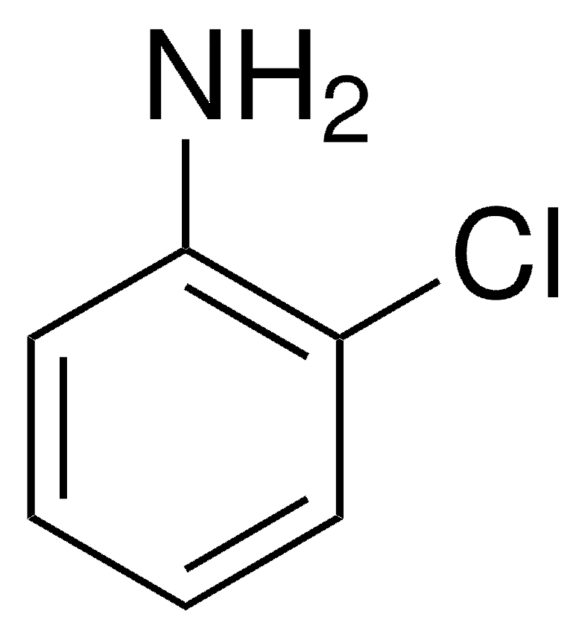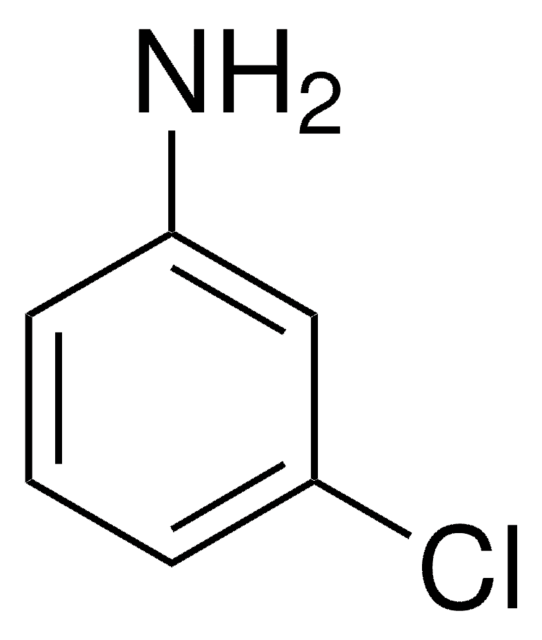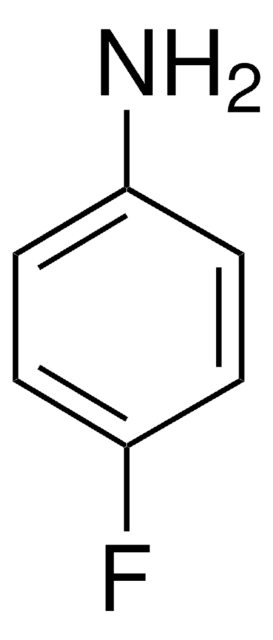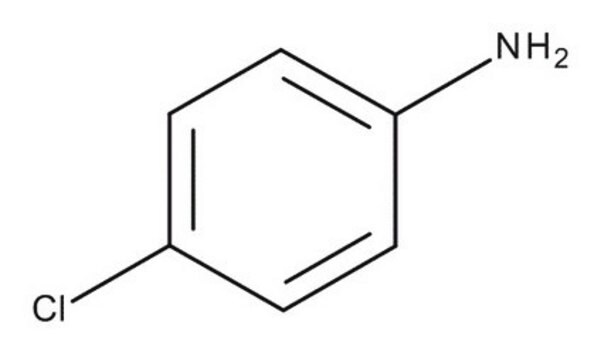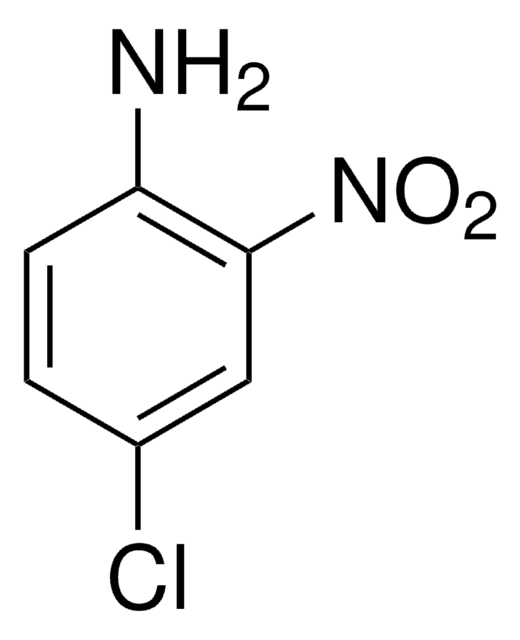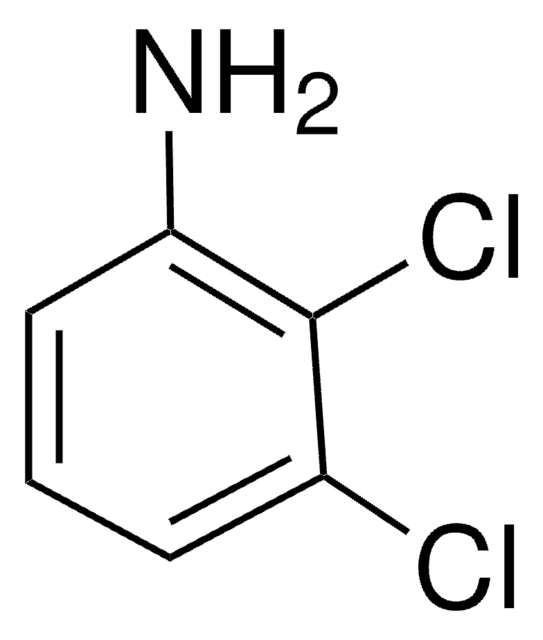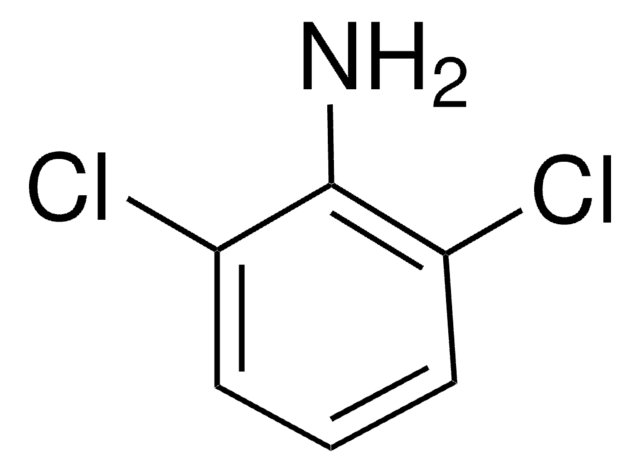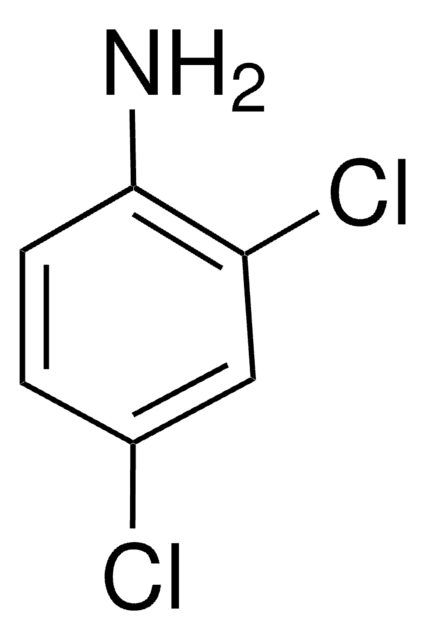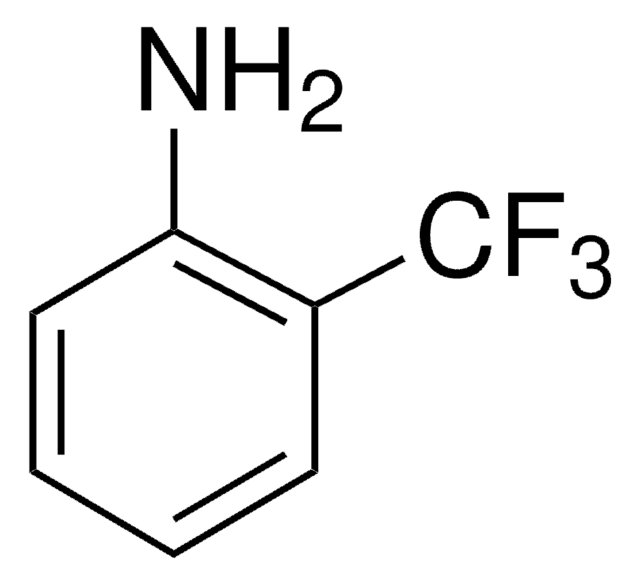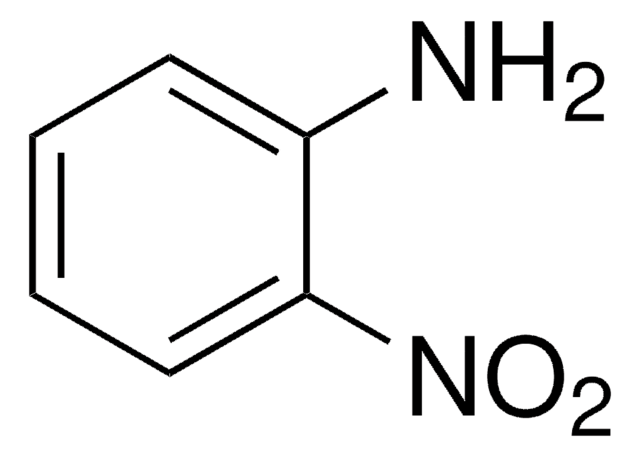Wichtige Dokumente
23310
2-Chloranilin
technical, ≥98.0% (GC)
About This Item
Empfohlene Produkte
Qualität
technical
Qualitätsniveau
Assay
≥98.0% (GC)
Form
liquid
Brechungsindex
n20/D 1.588
bp
208-210 °C (lit.)
Löslichkeit
water: soluble 5.13 g/L at 20 °C
Dichte
1.213 g/mL at 25 °C (lit.)
Funktionelle Gruppe
chloro
SMILES String
Nc1ccccc1Cl
InChI
1S/C6H6ClN/c7-5-3-1-2-4-6(5)8/h1-4H,8H2
InChIKey
AKCRQHGQIJBRMN-UHFFFAOYSA-N
Suchen Sie nach ähnlichen Produkten? Aufrufen Leitfaden zum Produktvergleich
Allgemeine Beschreibung
- 2-Chloroaniline is widely used in polymer, rubber, pharmaceutical and dye industries.
- Determination of 2-chloroaniline in polymer industrial wastewater has been examined using HPLC with on-line microdialysis.
- Degradation of 2-chloroaniline in water by ozonation as well as by photolysis (UV-light of 254 nm) and radiolysis (γ-rays) in the presence of ozone has been investigated.
Signalwort
Danger
Gefahreneinstufungen
Acute Tox. 3 Dermal - Acute Tox. 3 Inhalation - Acute Tox. 3 Oral - Aquatic Acute 1 - Aquatic Chronic 1 - Eye Irrit. 2 - Muta. 2 - STOT RE 2
Lagerklassenschlüssel
6.1A - Combustible acute toxic Cat. 1 and 2 / very toxic hazardous materials
WGK
WGK 3
Flammpunkt (°F)
221.0 °F - closed cup
Flammpunkt (°C)
105 °C - closed cup
Hier finden Sie alle aktuellen Versionen:
Besitzen Sie dieses Produkt bereits?
In der Dokumentenbibliothek finden Sie die Dokumentation zu den Produkten, die Sie kürzlich erworben haben.
Kunden haben sich ebenfalls angesehen
Protokolle
GC Analysis of Anilines on Equity®-5
Unser Team von Wissenschaftlern verfügt über Erfahrung in allen Forschungsbereichen einschließlich Life Science, Materialwissenschaften, chemischer Synthese, Chromatographie, Analytik und vielen mehr..
Setzen Sie sich mit dem technischen Dienst in Verbindung.